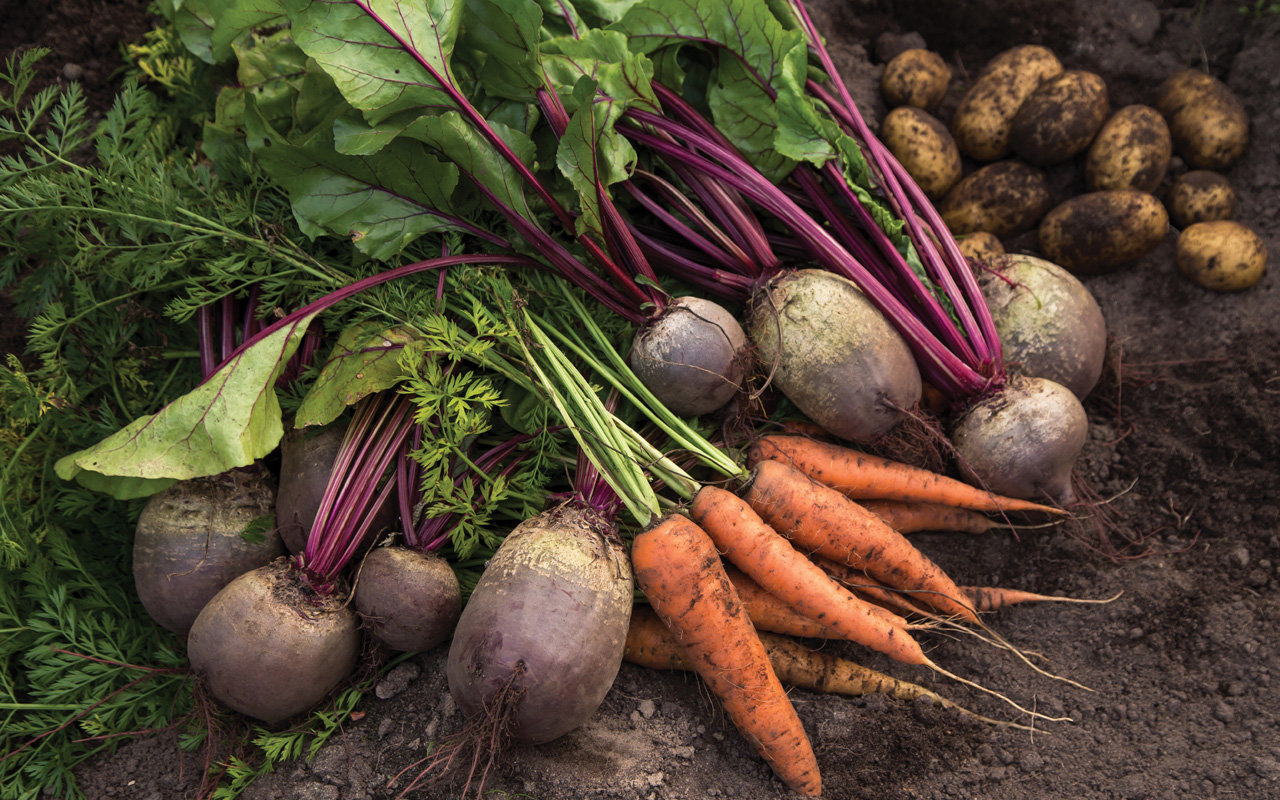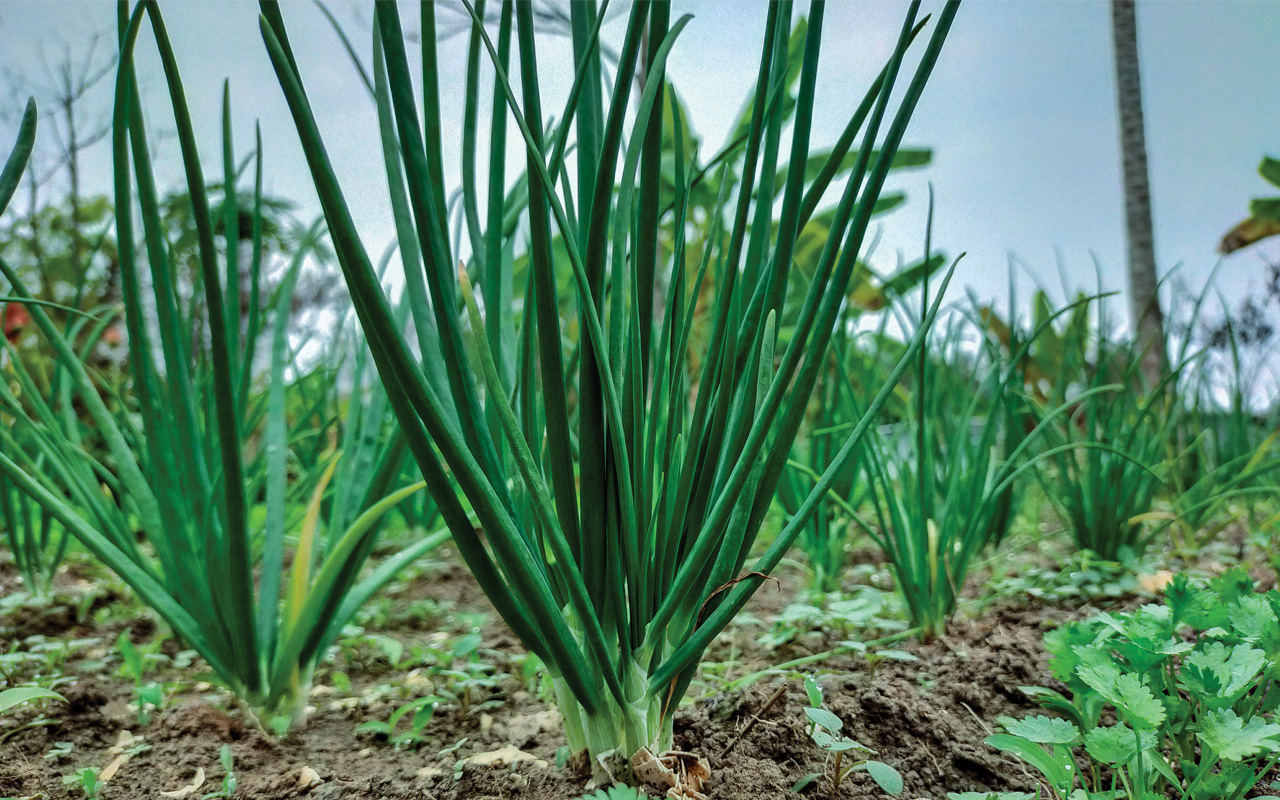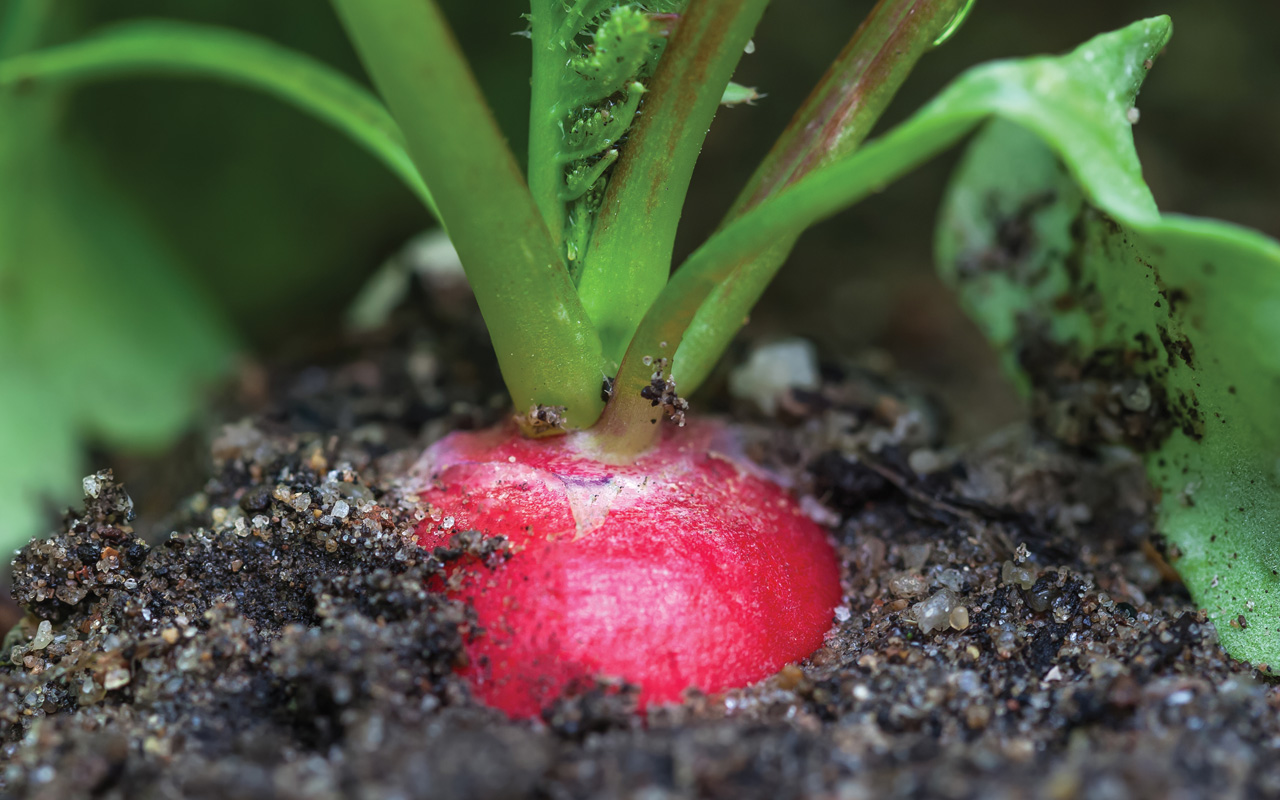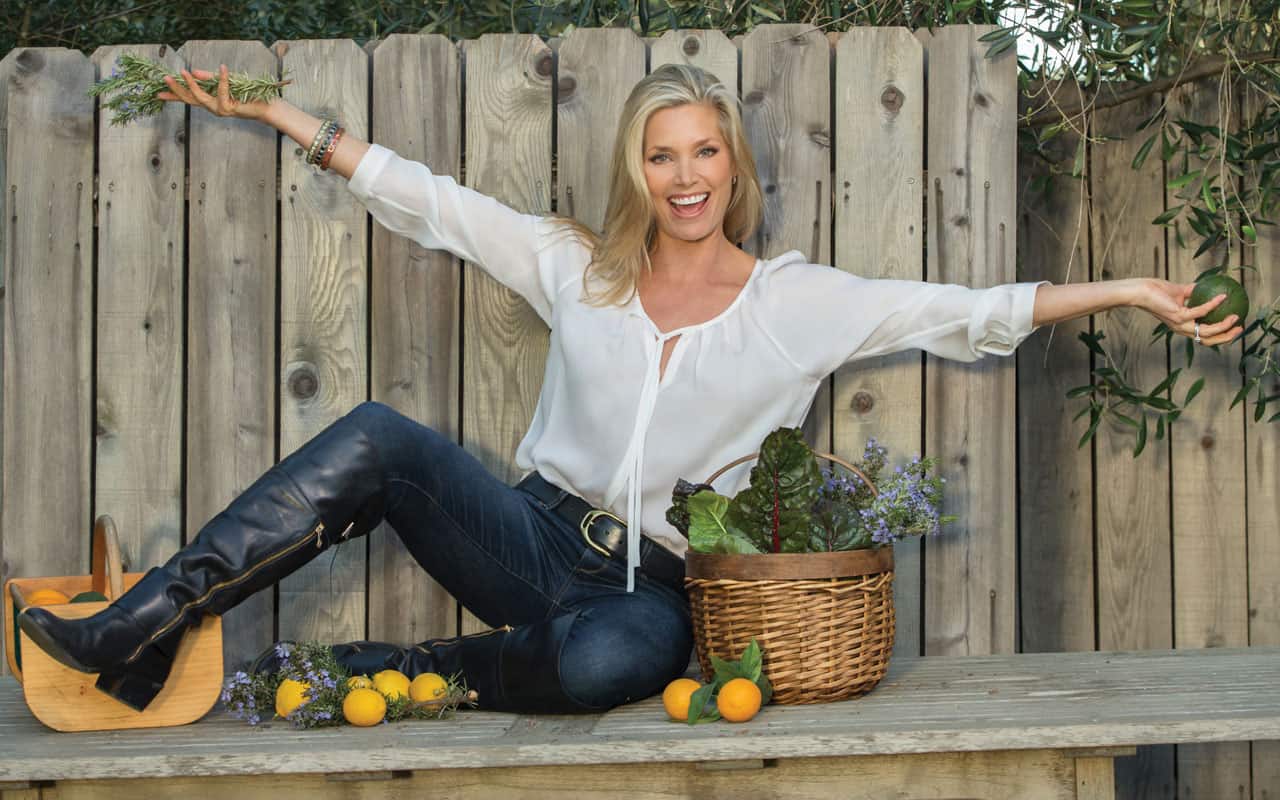
Are we really sliding into 2023?! The last 2 years have been an absolute blur. The pandemic changed how we work and spend our free time. Luckily it has turned lots of you into gardeners and better stewards for our earth. There’s a greater appreciation for friends, family and new-found passions. Finding wholesome outdoor activities while gyms were closed, was well sought after. In addition to gardening, my friends and I participated in makeshift jazzercize classes, until one day I was invited to play a sport called pickleball. That was it. I was hooked! All I wanted to do was play pickleball. I wasn’t the only one possessed by the sport! LeBron James, Drew Brees, Tom Brady and over 3 million people have become addicted! At least I didn’t buy a pickleball team! There is only one problem. My new obsession takes time away from my garden, so I need a new norm for the New Year. I’ve realized I have to be more efficient so I can have a thriving veggie garden and continue to dink around on the court! I think I can do both.
Here are ways to make gardening easier so you can continue to grow your own food and play pickleball.
EASY SEASONAL THINGS TO GROW
We are in December and January when things grow slower and working in the garden is easier. Sow chard, kale, leeks, Bibb and buttercrunch and romaine lettuces, mustards, green and bulb onions, flat-leaf parsley, peas, radishes, and savoy-leafed spinaches.
LETTUCES, KALE & CHARD
It’s one of the few crops that can be grown all year in our climate. This is a perfect time to grow leafy greens! They are slower to go to seed and bolt in the winter. Just plant the seeds, protect them from the occasional snail and harvest.
PEAS
Pea seeds can be sown directly into the soil outdoors between October and February. So, you still have time to put a few seeds in the ground.
ROOT VEGGIES
Carrots, turnips, radishes, and parsnips can be planted in January all the way through early spring. Radishes mature quite fast and can be harvested three to five weeks after planting. Turnips 6 to 10 weeks. Carrots from 50 to 75 days. Parsnips are a long season crop and take 100 days to maturity. Little care is necessary apart from thinning out seedlings in the beginning and making sure you have well-drained, loose soil for them to grow and expand their roots.
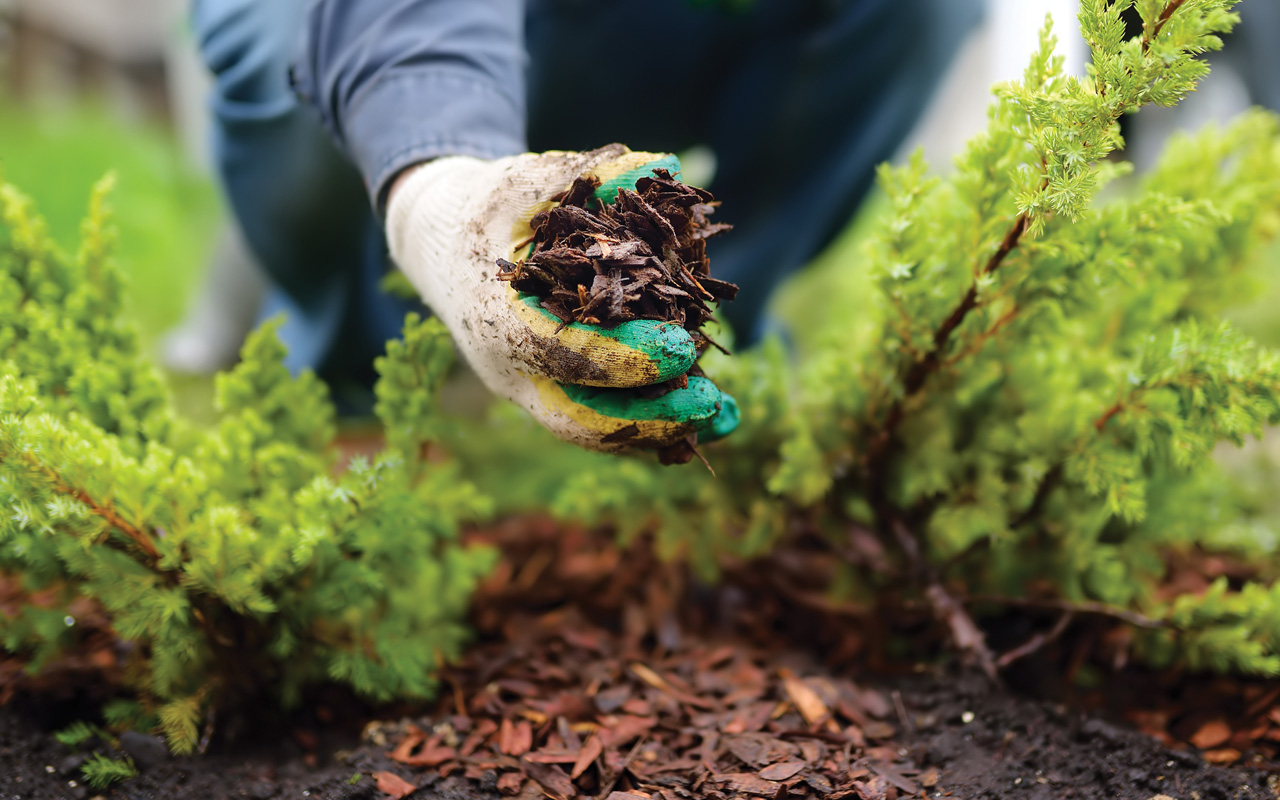
Mulching with wood chips
GREEN BUNCHING ONIONS
So easy to grow. Sprinkle the seed and let them do their thing. Harvest after planting when they reach four to six inches high. The larger they get, the stronger the flavor. They are fully matured by 4 to 5 months from seeding to harvest.
EASY WEEDING
Weeding can be back breaking and time consuming but there are ways to save both.
• SHEET MULCHING – This is an eco-friendly, herbicide-free way to clear land. Use a heavy duty, black plastic material that is used for ponds or roof lining. Lay plastic over the area you want cleared and weigh it down. In the winter this can take up to six months and two months during the summer. Once you lift the plastic, kill unwanted snails and dig out the hardiest of perennial weeds that survived. Voila, your land is clear for cultivation.
• FALSE SEED BED TECHNIQUE – Eliminate weeds early in the season. Prepare a seedbed. Allow weeds to germinate and grow to the 2- to 4- leaf stage, the most effective stage for weed control. Then pull out the unwanted weeds with a hoe. Your weed-free bed is ready for planting.
• PLANTING IN DOUBLE ROWS – Sowing or planting in two rows close together reduces the areas you have to weed.
• MULCH – Laying mulch, compost, straw, or even newspaper over the ground between crops will keep weeds from growing. Mulching not only reduces weeds but keeps the soil underneath moist. Spread it a few inches deep all around your plants but make sure it doesn’t cover the stems.
REDUCE DIGGING
Like weeding, digging is another thing I want to completely avoid. It’s back-breaking and time-consuming work.
NO-DIG GARDENING
1. Mow your grass very low, then fertilize with blood/bone fertilizer and water. This helps rot the grass down more quickly.
2. Lay down a ¼” thick layer of newspaper, overlapping edges by 6”, and water it down.
3. Now add a 4” thick layer of lucerne or alfalfa hay and water well. If you don’t have access to alfalfa for a no-dig garden, you can alternately use hay or straw. Alfalfa is high in nitrogen and breaks down more quickly.
4. Spread a 2” thick layer of compost, and water in.
5. Add another 4” straw layer
6. Repeat a 2” layer of compost and worm castings and then a 4” layer of alfalfa.
7. You are ready to plant.
8. Make a hole in the top straw layer with your hands, just big enough for the plant’s root ball (about 4-6” wide). Fill the hole with compost, then plant seeds, seedlings, or small plants, and water in well.
9. Add wooden edging to contain all the materials.
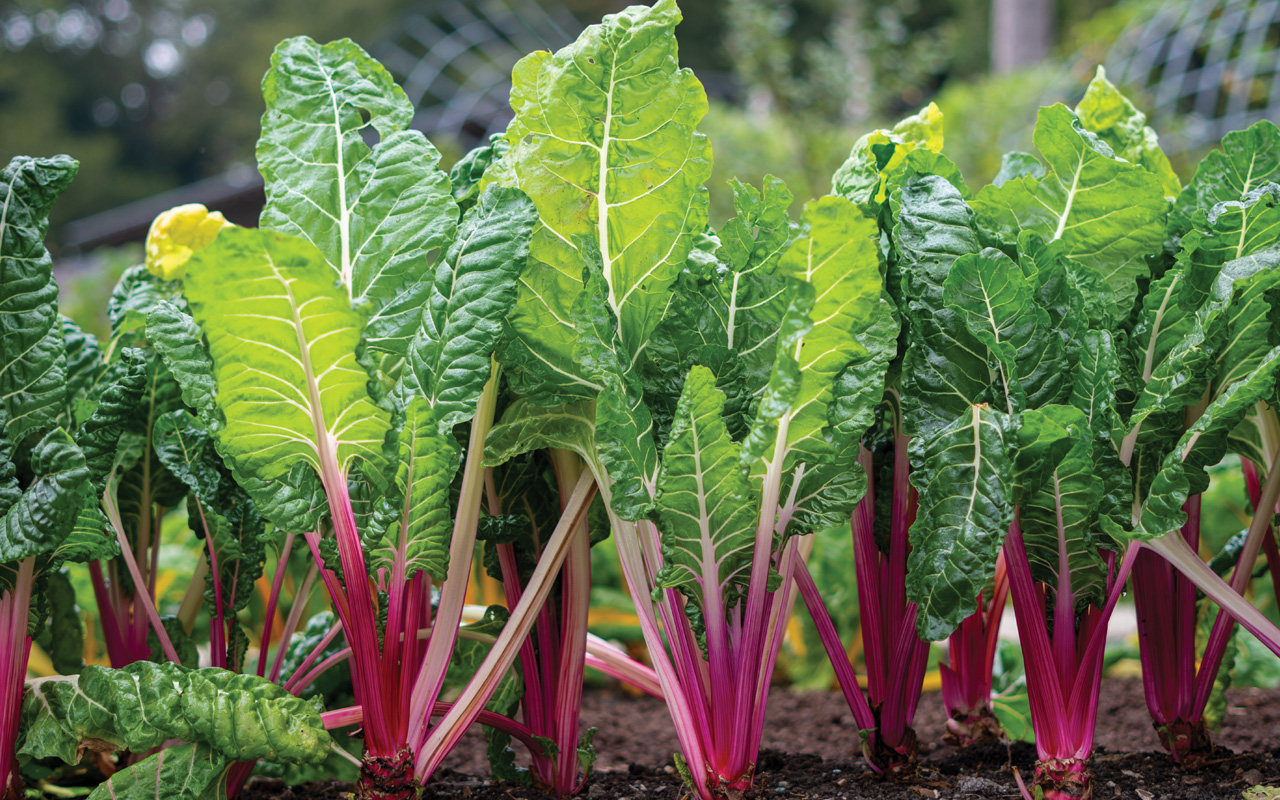
Swiss chard in my garden
CONTAINER GARDEN
Most veg will happily grow in pots, planters, and large containers and there isn’t any digging involved! Try vertical gardening and grow upwards instead of outwards. It results in fewer plant problems and it’s easier on your back, too! Great for when your space is limited.
GROW MORE PLANTS WITH LESS WORK
Sowing seeds, tending baby plants, and caring for maturing crops can be a lot of work.
SELF-SEEDING VEGGIES
Sow once and some herbs and vegetables can come up year after year without having to re-seed. Some excellent self-seeders are arugula, mustard greens, lettuce and radishes. Herbs such as chamomile, cilantro and dill will flower and self-seed easily as well.
PERENNIAL CROPS
They’re not only hardy but only need one planting for them to re-grow every year. Artichokes and bunching onions. Herbs such as rosemary, sage, thyme and oregano.
PLANT CLOSE TO HOME
Keep crops that you want to harvest close to your home. It’s smart to grow lettuces, greens, and herbs in a convenient place to save time.
Gardening has been the most rewarding hobby I’ve ever had! Growing my own food submerged in the seasons and nature, will forever fill my soul. Now that I have a growing passion for pickleball, my new norm for the New Year is, reducing my workload and getting the biggest yield with the lowest effort. That way I can continue to enjoy my garden while working in a few pickleball games every day of the week. I warned you that I am obsessed!
If you haven’t tried gardening or pickleball, I highly recommend both!
See you on the courts!
Kelly Emberg, the model gardener
For more gardening tips, follow me on
Facebook, Instagram, YouTube & Twitter.
www.kellyemberg.com

